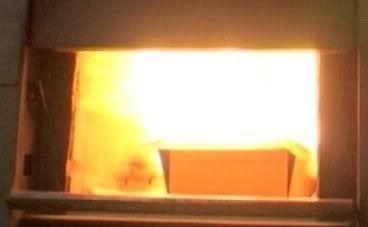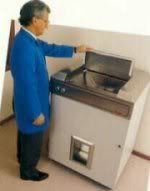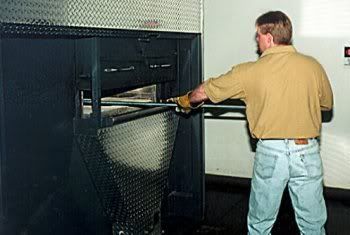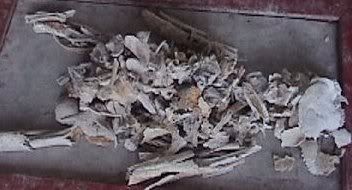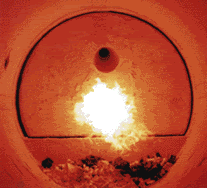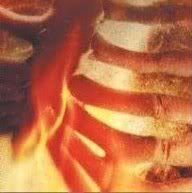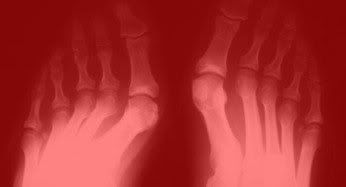
Should Jackie prove difficult to finish off, these burners are designed to deal completely and effectively with difficult residue. The cremator also has an entry burner which will be used to eliminate smoke from Jackie's waste gases. This burner may also be used to break up her bones. The burners will get cremation chamber's temperature up to 850 degrees Centigrade before it swallows Jackie. Later on they will stop her from smoking and re-ignite her if her fire goes out during the closing stages of cremation. Since Jackie and her casket are good fuel (providing around 800,000 BTUs of heat) the burners don't need to ignite at any other time. Air to feed Jackie's fire comes from 18 jets, 9 at each side of the cremator, as well as through the main burners.



